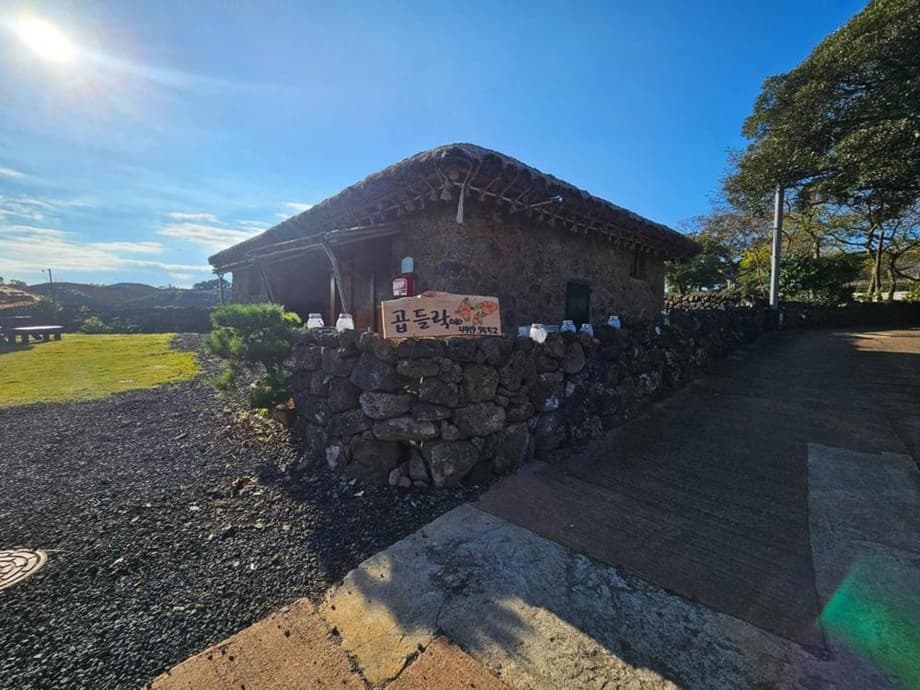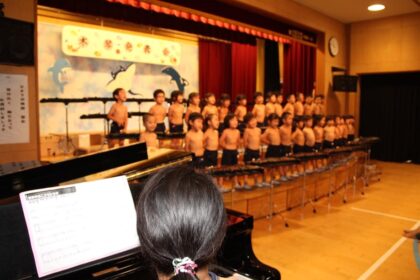Why October 2025 Stood Out in South Korea
October 2025 delivered an unusual mix of climate records, a high profile technology failure in government, and a packed cultural and sports calendar. On Jeju Island, the city of Seogwipo logged a tropical night very late in the season, the latest on record for October. In public administration, a fire linked to a government storage system called G Drive destroyed files connected to a large number of officials, prompting urgent questions about resilience and backup practices. At the same time, music charts were led by powerhouse girl groups, the baseball postseason opened with tight races, and award programs in film and education set their timelines. These story lines frame a month where daily life, policy, entertainment, and sport intersected in telling ways that define the country at this moment.
- Why October 2025 Stood Out in South Korea
- Record Heat in Jeju Comes Late in the Season
- Digital Shock: Government G Drive Fire and Data Loss
- Entertainment Pulse: Girl groups lead October charts
- Sports Spotlight: KBO postseason begins and award chatter
- Education and Awards: Recognizing teachers and film craft
- Security Watch: North Korea stories remain a constant thread
- Why These Threads Matter Now
- Key Points
South Korea’s weather patterns have grown warmer and more humid over decades, a shift that makes late season warm nights more likely. The data loss case shows how digital government can be efficient yet fragile if safeguards fall short. In culture and sport, the national spotlight swung to rising stars and year end competition, underscoring the strength of the creative sector and the lasting appeal of baseball. Understanding these threads helps explain why October drew such wide attention at home and abroad.
Record Heat in Jeju Comes Late in the Season
Residents of Seogwipo on Jeju Island experienced a tropical night in October, the latest such event on local records. A tropical night refers to a night when the lowest temperature does not drop below 25 degrees Celsius. For a seaside city at Jeju’s latitude, very warm nights are common in mid summer. In October, they are rare. This year’s late event highlights how warmer seas and lingering humidity can keep nights hot well into autumn.
Jeju sits in the path of warm ocean currents that can store heat through late summer and early fall. When onshore winds blow, warm moist air flows over the island and keeps temperatures elevated. Urbanization can also add to night heat. Buildings and paved surfaces absorb warmth in the day and release it slowly after sunset, a pattern known as the urban heat island effect. When this effect combines with above average sea temperatures, overnight cooling becomes difficult, even in October.
Late season tropical nights matter for public health and energy use. Warm nights reduce the body’s chance to cool, raising stress for older adults, outdoor workers, and people with chronic illness. Air conditioner demand and electricity loads can stay high at a time when many families expect lower bills. City planners and health officials often respond with heat advisories, cooling centers, and outreach to vulnerable residents. For island regions that welcome visitors year round, tourism workers also adjust schedules and hydration plans to keep staff safe.
What is a tropical night and why does it matter
In South Korea, a tropical night is generally defined as any night with a minimum temperature of 25 C or higher. Meteorologists track these nights because the count is a strong indicator of climate warming at the neighborhood level. Daytime highs often take the headlines, yet it is overnight warmth that influences human recovery, agriculture outcomes, and the spread of pests and disease. A late tropical night in October points to season creep, where summer like conditions stretch further into autumn than they did decades ago. That pattern, if it repeats, will change the timing of harvests, the design of buildings, and even school athletic schedules.
Digital Shock: Government G Drive Fire and Data Loss
Early in the month, a fire connected with a government storage system called G Drive destroyed large amounts of official data. Reports indicated that data linked to about one hundred twenty five thousand officials was affected. The scale is extraordinary for any public administration. The incident highlights a central tension in digital government. Centralized storage can be efficient for collaboration and auditing, yet a single point of failure can jeopardize core records if backup discipline is weak.
When a storage site burns, damage comes from heat, smoke, particles, and the suppression process. Fire control systems that deploy powder or gas can leave residue on electronics. Hard drives, cables, and power systems may suffer corrosion or shorts when dust and moisture mix. Recovery teams often must remove contamination before they can even assess what is salvageable. If backups are not recent and isolated, whole datasets can vanish.
How robust backup works in practice
Best practice favors the three two one rule. Keep three copies of data, on two different types of storage, with one copy held offsite and offline. That offline copy is key. It cannot be reached by a fire or a cyber attack that spreads through a network. For public agencies, that might mean routine snapshots to immutable storage that cannot be altered for a fixed period, plus periodic copies to a secure offsite archive. Regular drills and audits are essential. Teams need clear playbooks for how to recover, who does what, and how to bring essential services back online safely.
Citizens expect both continuity and transparency after such failures. A public timeline for restoration, a list of what was lost, and plain language explanations build trust. The incident will likely prompt deeper reviews of procurement, redundancy, and accountability. For professionals in records management, it is a call to evaluate retention schedules, encryption, and the balance between convenience and resilience.
Entertainment Pulse: Girl groups lead October charts
On the music front, girl groups dominated early October charts. IVE rose to the top of a world chart, while BABYMONSTER led the album ranking with a mini album titled We Go Up. This pairing reflects familiar dynamics in the current scene. Strong streaming and global fandom often propel one act on composite rankings, while first week album sales from another group surge on the back of a focused fan base. October is a strategic month for releases, with major acts positioning for year end shows and awards.
The chart in question, compiled by Hanteo, is one of the key measures of physical album performance. Retail partners feed real time sales back to the system, and weekly tallies add to cumulative totals that shape awards eligibility. For fans, chart results carry social meaning. The numbers become a scoreboard for community effort, showcase stages, and the narrative of who is leading the pack. For the industry, hits drive exports, sponsorships, and global tours that have made Korean pop culture a mainstay of soft power.
Sports Spotlight: KBO postseason begins and award chatter
The 2025 baseball postseason in Korea opened on October 5, with a frenetic sprint set up by makeup games that wrapped on October 3. The league follows a ladder style route to the championship. The fifth place team faces the fourth place team in a short wild card series where the fourth place club starts with a built in advantage. The winner advances to face the third place team, then the second, with the regular season leader waiting in the Korean Series. The format rewards consistency across 144 games while still giving lower seeds a chance to make a run.
Individual honors also entered the conversation. Doosan pitcher Jack Log earned the Shell Helix award tied to top season performance by Wins Above Replacement. WAR is a comprehensive measure that estimates the value a player contributes compared to a freely available alternative. It blends hitting or pitching results with league and park factors to offer a single number benchmark. While no metric is perfect, WAR helps voters and fans frame debates around most valuable players and top pitchers with a common language.
Autumn baseball in Korea carries a special energy. Crowds pack stadiums with towels, songs, and drum beats that are part street festival and part chess match. Television ratings and digital clips climb as the weather cools. For clubs and cities, a deep run boosts local pride along with box office receipts. For players, a strong October can cement a legacy.
Education and Awards: Recognizing teachers and film craft
Two programs set their calendars. The Ministry of Education, working with the Chosun Ilbo and the Bang Il young Cultural Foundation, opened nominations for the 2025 Teacher of the Year with a late October deadline. The award looks for educators who bring innovation to classrooms, improve student outcomes, and share methods that peers can adopt. These institutional spotlights raise the profile of teaching at a time when schools navigate demographic shifts, mental health needs, and technology integration.
In film, the Blue Dragon Film Awards announced the ceremony for November 19, and the Cheongjeongwon Short Film Award began taking submissions on September 30. The Blue Dragon brand is one of the top honors in the industry, along with the Grand Bell and the Baeksang Arts Awards. Its categories span acting, directing, cinematography, and technical craft. The short film program gives new voices a broader platform. That pipeline helps explain why Korean directors and crews continue to find audiences at home and at major festivals abroad.
Security Watch: North Korea stories remain a constant thread
Beyond domestic topics, coverage of North Korea continued to draw attention in 2025. Early in the year, two captured North Korean soldiers described deployment and detention conditions in accounts that referenced events in October and November of the previous year. Such reporting underscores the persistent volatility along the Demilitarized Zone and the human stakes on both sides of the border. While the October news cycle did not center on a single North Korea headline, the backdrop of security tensions remains present in policy debates and public awareness.
South Korea’s security environment intersects with daily life more than many outsiders appreciate. Defense postures influence budgets, diplomacy, and even technology programs that later support civilian uses. The mix of hard news and human stories helps readers grasp both the strategic and personal dimensions of the peninsula’s divide.
Why These Threads Matter Now
The late tropical night in Seogwipo is a small data point with broad meaning. Cities and islands face a future with warmer, longer summers, and that calls for better heat management, tree canopy strategy, and building codes that keep homes cooler at night. Tourism operators on Jeju can review shift timing and hydration plans for seasons once considered mild. Energy planners can factor higher shoulder season demand into grid forecasts.
The G Drive fire illustrates how complex systems can fail through a chain of small gaps. Backup discipline, testing, and offline copies are neither glamourous nor simple to budget, yet they guard against rare events with outsized damage. The cultural and sports updates show a different side of national resilience. Music and film build identity and exports. Baseball binds communities and creates traditions shared across generations. Together, these stories paint a picture of a country that prizes efficiency and excellence while confronting new climate and technology risks head on.
Key Points
- Seogwipo on Jeju Island recorded a rare tropical night in October, the latest on local records.
- A tropical night means the lowest temperature stays at or above 25 C through the night.
- Warm seas, humidity, and urban heat made late season nighttime cooling difficult.
- A government storage system called G Drive suffered a fire that destroyed data linked to about 125,000 officials.
- The incident highlights the need for the three two one backup rule with an offline offsite copy.
- IVE led a world chart and BABYMONSTER topped the album list with a new mini album titled We Go Up.
- The KBO postseason began on October 5, following makeup games that finished by October 3.
- Doosan pitcher Jack Log received a performance award tied to top Wins Above Replacement.
- Nominations opened for 2025 Teacher of the Year, and the Blue Dragon Film Awards set the ceremony for November 19.
- Coverage of North Korea remained a steady thread, reflecting the peninsula’s ongoing security challenges.












